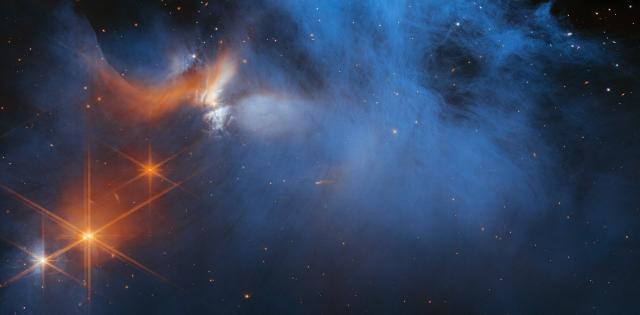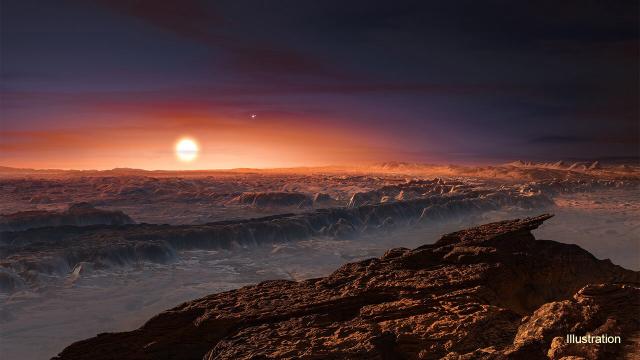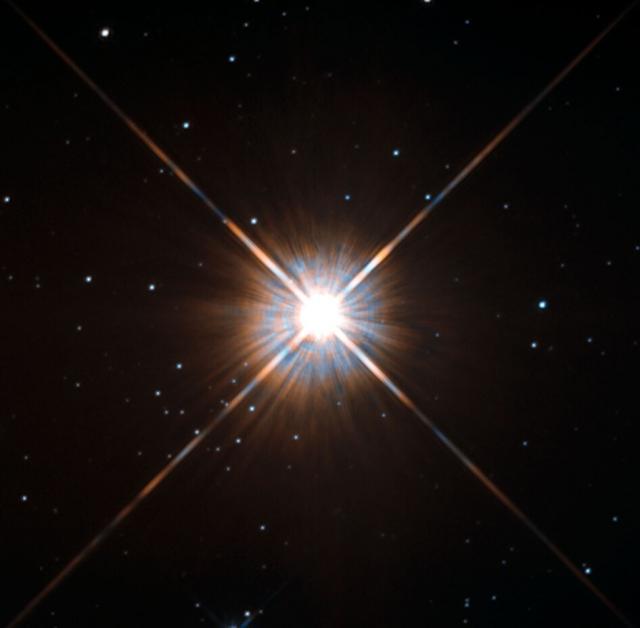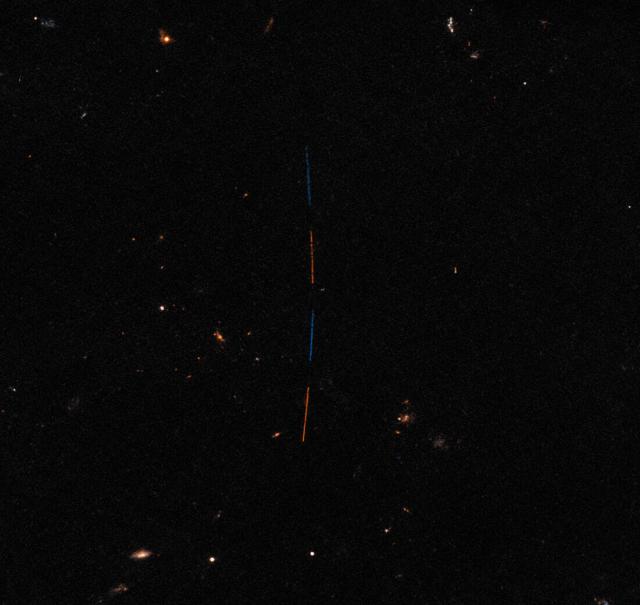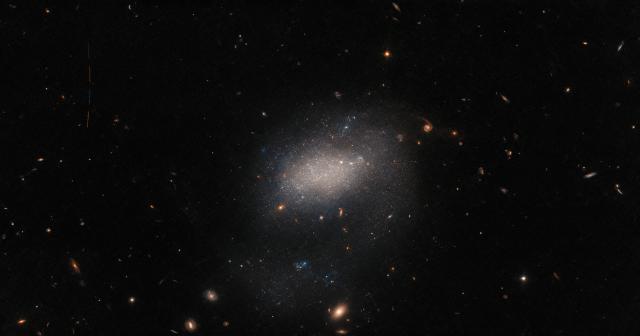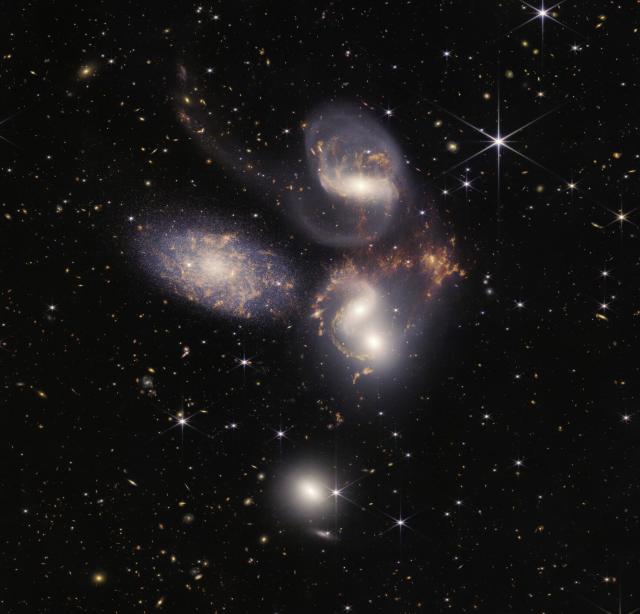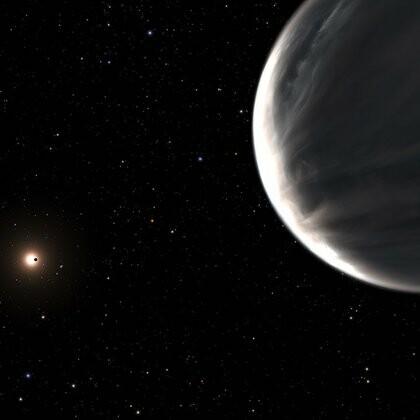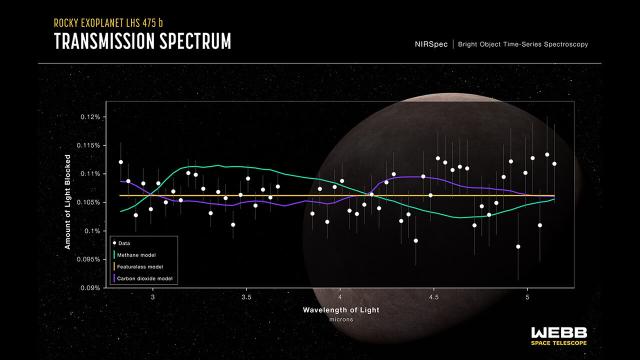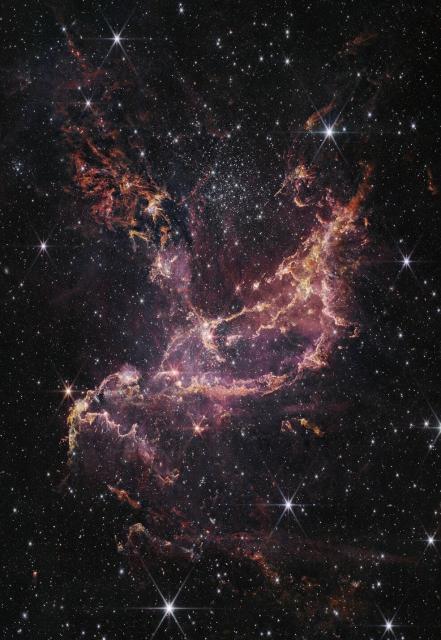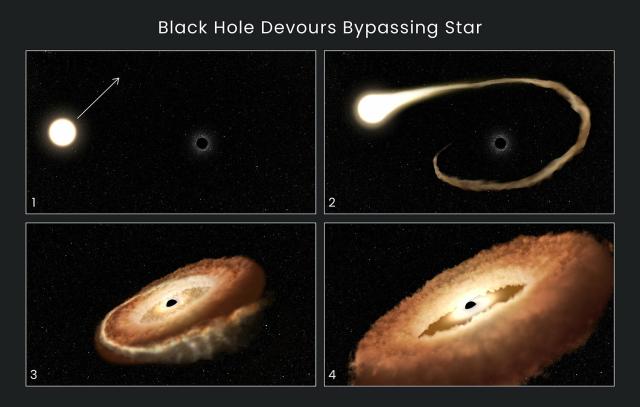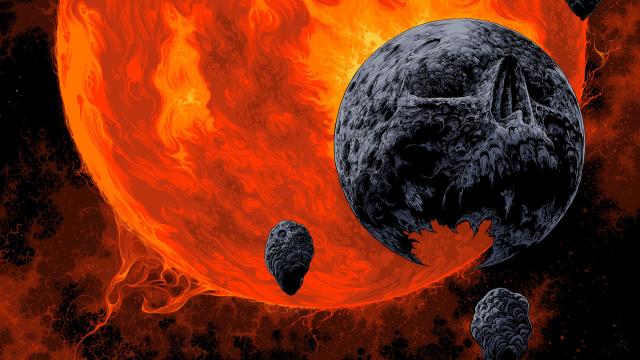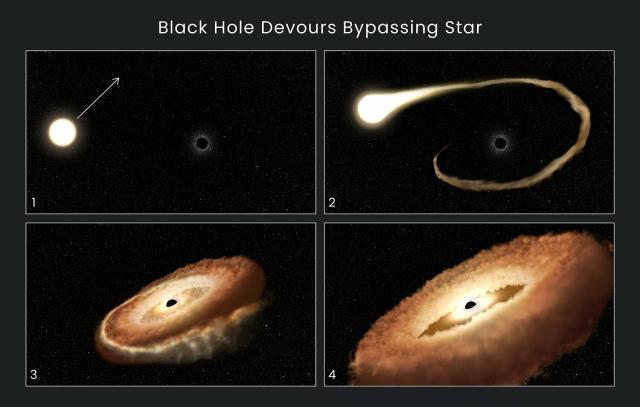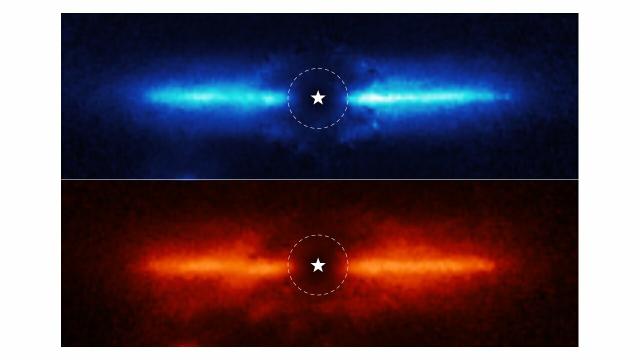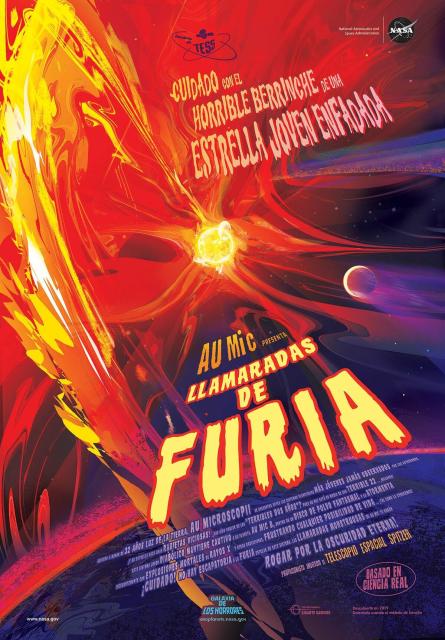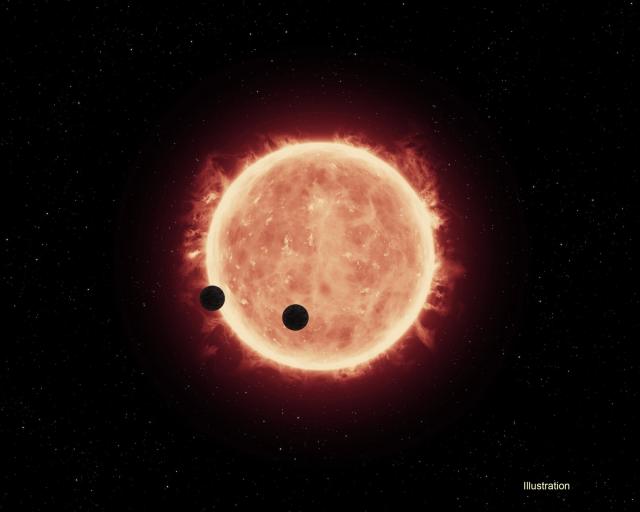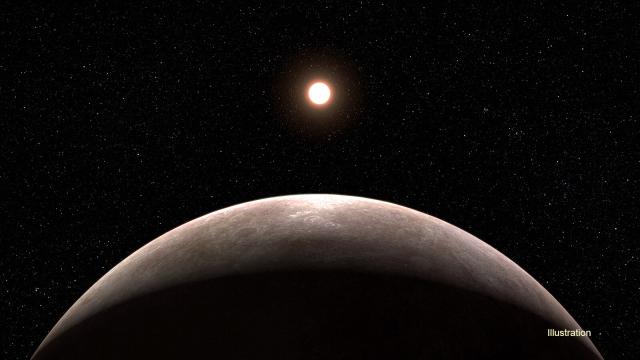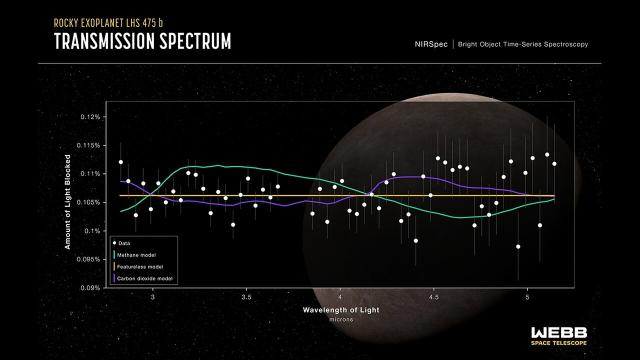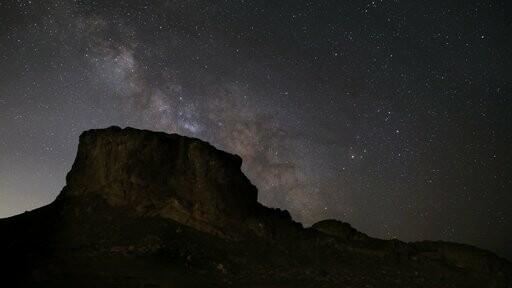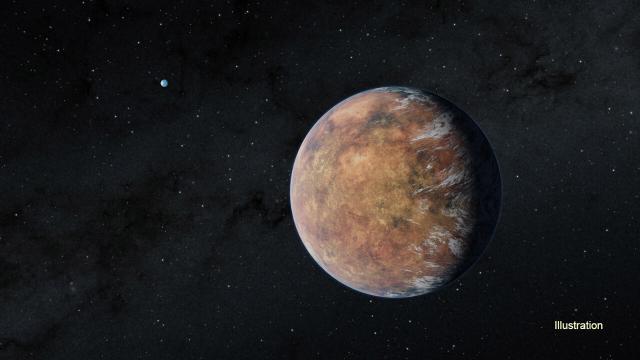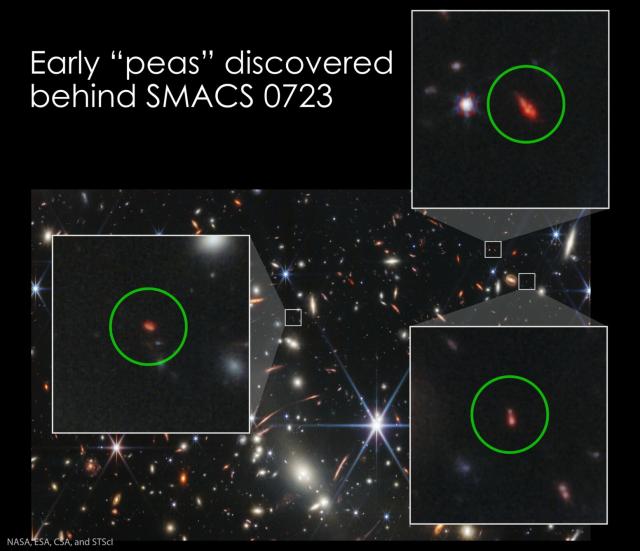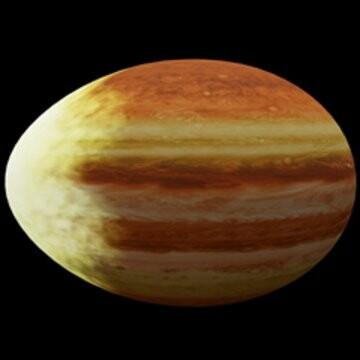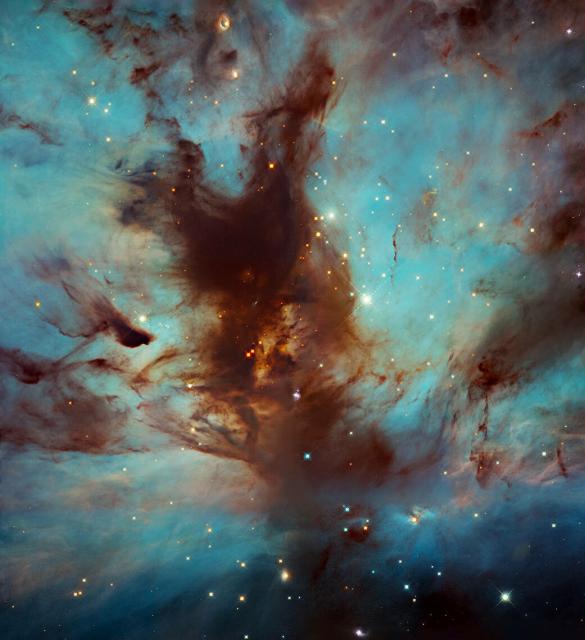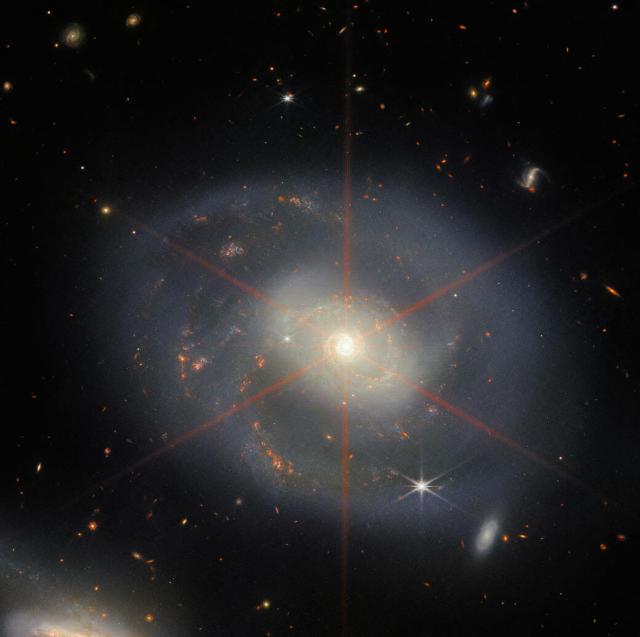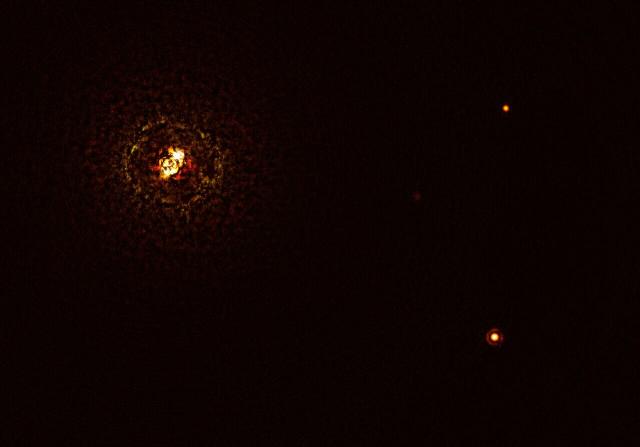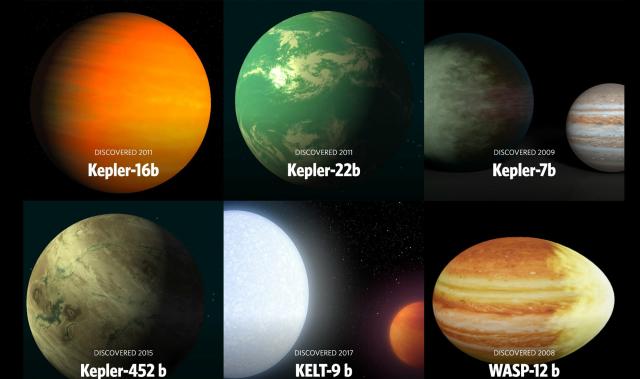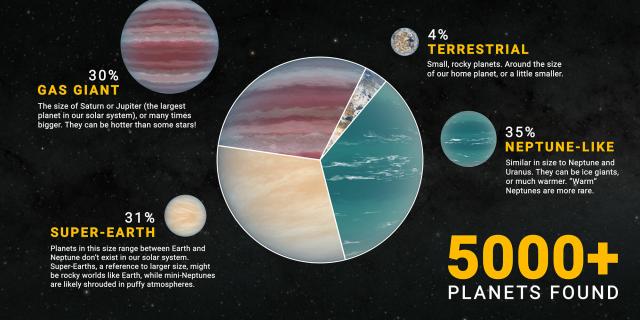Search
Items tagged with: NASAExoplanets
#NASAExoplanets
Webb Unveils Dark Side of Pre-stellar Ice Chemistry
An international team of astronomers using NASA’s James Webb Space Telescope has obtained an in-depth inventory of the deepest, coldest ices measured to date in a molecular cloud.Jamie Adkins (NASA)
#NASAExoplanets
#NASAExoplanets
The star closest to our Sun, Proxima Centauri, also hosts the closest exoplanet to Earth, only 4.2 light-years away. The small star is hard to see, but now there's more reason to look! A possible second planet, Proxima Centauri c, is awaiting confirmation!
#NASAExoplanets
#NASAExoplanets
@NASAHubble captures a minor asteroid in our solar system streaking across the upper left of the image. In the center, a small galaxy appears as a hazy cloud. UGC 7983 is 30 million light-years from Earth in the Virgo constellation. go.nasa.gov/3XsLZwb
#NASAExoplanets
Hubble Captures Cosmic Treasure Trove
A host of astronomical objects are scattered across this image from the NASA/ESA Hubble Space Telescope. Background galaxies ranging from stately spirals to fuzzy ellipticals are strewn across the image.Andrea Gianopoulos (NASA)
#NASAExoplanets
NASA Recaps Webb Telescope Findings From AAS Meeting
Scientists shared new findings and updates from NASA’s James Webb Space Telescope, also called “Webb” or “JWST,” at press conferences during the 241st meeting of the American Astronomical Society (AAS) in Seattle, from Jan. 8 to 12.Jessica Merzdorf (NASA)
#NASAExoplanets
Two Super-Earths May Be Mostly Water
Two exoplanets orbiting a red dwarf star may be "water worlds." They are 218 light-years away in the constellation Lyra, and are unlike any planet found in our solar system.Exoplanet Exploration: Planets Beyond our Solar System
Hey, little buddy 👋 go.nasa.gov/3Hor1cB
#NASAExoplanets
#NASAExoplanets
Webb Confirms Its First Exoplanet
The planet is rocky and almost precisely the same size as Earth, but whips around its star in only two days.Exoplanet Exploration: Planets Beyond our Solar System
"Darkness cannot drive out darkness, only light can do that." — Dr. Martin Luther King Jr.
With respect and gratitude, we look to the stars on #MLKDay
#NASAExoplanets
#NASAExoplanets
NASA’s Webb Uncovers Star Formation in Cluster’s Dusty Ribbons
NGC 346, one of the most dynamic star-forming regions in nearby galaxies, is full of mystery. Now, it is less mysterious with new findings from NASA’s James Webb Space Telescope.Jessica Merzdorf (NASA)
1. Be a supermassive black hole ⚫
2. Catch a star that wanders too close & suck in its outer gas 🥤
3. Shred the star 🔪
4. Twist the star remnants into a donut shape that will eventually fall into the black hole 🍩
go.nasa.gov/3W8wBDY
#NASAExoplanets
Hubble Finds Hungry Black Hole Twisting Captured Star Into Donut Shape
Astronomers using NASA's Hubble Space Telescope have recorded a star's final moments in detail as it gets gobbled up by a black hole.Andrea Gianopoulos (NASA)
Why not lean in? Check out some of the most nightmarish planets in our galaxy? Exoplanets.nasa.gov/galaxy
#NASAExoplanets
Galaxy of Horrors | Explore – Exoplanet Exploration: Planets Beyond our Solar System
NASA’s Exoplanet Exploration Program, the search for planets and life beyond our solar system.Exoplanet Exploration: Planets Beyond our Solar System
A second Earth-sized exoplanet is found hiding in a star’s habitable zone! A year there, one orbit, takes 28 days. It joins three other worlds in the system 100 light-years from Earth.
go.nasa.gov/3k8JHns
#NASAExoplanets
Second Earth-sized World Found in System's Habitable Zone
A second Earth-sized world is found in habitable zone of a star with three previously known planets.Exoplanet Exploration: Planets Beyond our Solar System
Black holes lie in wait until a hapless star wanders by. When the star gets close enough, the black hole's gravitational grasp violently rips it apart and sloppily devours its gasses while belching out intense radiation. go.nasa.gov/3W8wBDY
#NASAExoplanets
Hubble Finds Hungry Black Hole Twisting Captured Star Into Donut Shape
Astronomers using NASA's Hubble Space Telescope have recorded a star's final moments in detail as it gets gobbled up by a black hole.Andrea Gianopoulos (NASA)
#NASAExoplanets
New Webb Image Reveals Dusty Disk Like Never Seen Before
NASA’s James Webb Space Telescope has imaged the inner workings of a dusty disk surrounding a nearby red dwarf star.Madison Arnold (NASA)
#NASAExoplanets
Flares of Fury Poster - Exoplanet Exploration: Planets Beyond our Solar System
Located less than 32 light-years from Earth, AU Microscopii is among the youngest planetary systems ever observed by astronomers, and its star throws vicious temper tantrums!Exoplanet Exploration: Planets Beyond our Solar System
#NASAExoplanets
#NASAExoplanets
NASA’s Webb Uncovers Star Formation in Cluster’s Dusty Ribbons
NGC 346, one of the most dynamic star-forming regions in nearby galaxies, is full of mystery. Now, it is less mysterious with new findings from NASA’s James Webb Space Telescope.Jessica Merzdorf (NASA)
@NASAWebb not only confirms a planet candidate found by @nasa’s TESS space telescope, it provides new science, determining the planet is rocky. We also get preliminary atmospheric info. Good science and *excellent* teamwork! go.nasa.gov/3XfmOgi
#NASAExoplanets
Webb Confirms Its First Exoplanet
The planet is rocky and almost precisely the same size as Earth, but whips around its star in only two days.Exoplanet Exploration: Planets Beyond our Solar System
#NASAExoplanets
A @nasa citizen science program encourages the public to join the search for new exoplanets. All you need is a telescope or a smartphone! go.nasa.gov/3WZrnf5
#NASAExoplanets
Help Discover Worlds With NASA
NASA's Exoplanet Watch project invites you to use your smartphone or personal telescope to help track worlds outside our solar system.Exoplanet Exploration: Planets Beyond our Solar System
#NASAExoplanets
Citizen Science | Science Mission Directorate
Opportunities to help NASA by doing cutting-edge research together with NASA scientists.go.nasa.gov
#NASAExoplanets
Second Earth-sized World Found in System's Habitable Zone
A second Earth-sized world is found in habitable zone of a star with three previously known planets.Exoplanet Exploration: Planets Beyond our Solar System
#NASAExoplanets
In @NASAWebb's very fist image, scientists have now identified three of the earliest galaxies, and they resemble a rare type in our cosmic neighborhood: Green pea galaxies. go.nasa.gov/3GPdQB2
#NASAExoplanets
NASA’s Webb Telescope Reveals Links Between Galaxies Near and Far
A new analysis of distant galaxies imaged by NASA’s James Webb Space Telescope shows that they are extremely young and share some remarkable similarities to “green peas,” a rare class of small galaxies in our cosmic backyard.Francis Reddy (NASA)
Some planets are so close to their stars that they're being pulled and stretched as the stars consume them. WASP-12b is one such doomed world. 🍳 go.nasa.gov/3IvnUjZ
#NASAExoplanets
WASP-12b 3D Model - Exoplanet Exploration: Planets Beyond our Solar System
The doomed egg-shaped exoplanet WASP-12b is a hot Jupiter that orbits so close to its parent star, it's being torn apart.Exoplanet Exploration: Planets Beyond our Solar System
Next week, @nasa will be sharing recent discoveries at a science conference. Meanwhile, we'll be sharing the science with *you*! Stay tuned for new planets, @NASAWebb discoveries and more! nasa.gov/feature/nasa-science-…
#NASAExoplanets
NASA Science To Be Featured at American Astronomical Society Meeting
Experts will discuss new research from NASA missions at the 241st meeting of the American Astronomical Society (AAS), on topics ranging from the universe’s early galaxies to planets outside our solar system.Alise Fisher (NASA)
#NASAExoplanets
The Habitable Zone | The Search For Life – Exoplanet Exploration: Planets Beyond our Solar System
Have you heard of the habitable zone? You're in one right now. It's the distance from a star where you might find exoplanets with liquid surface water. We use the habitable zone to help focus our search for life beyond Earth.Exoplanet Exploration: Planets Beyond our Solar System
Just 16 light-years from Earth, two super-Earths orbit a small red star in a matter of days. They join 5,235 known worlds. go.nasa.gov/3vDSY9C
#NASAExoplanets
@NASAWebb reveals bright starbirth around the center of a spiral galaxy 220 light-years from Earth in the Pegasus constellation. The background is awash with other galaxies and stars. Imagine the worlds within! go.nasa.gov/3ClDV8a
#NASAExoplanets
Starry Wreath in Pegasus
The James Webb Space Telescope spies the spiral galaxy NGC 7469, located 220 million light-years from Earth in the constellation Pegasus, in this image released on Dec. 21, 2022.Monika Luabeya (NASA)
#NASAExoplanets
A Wonderland of Science Awaits
We've already had gifts aplenty this year and we're looking forward to the science to come in 2023, including Webb's observation of the TRAPPIST-1 planets.Exoplanet Exploration: Planets Beyond our Solar System
#NASAExoplanets
What is a light-year? – Exoplanet Exploration: Planets Beyond our Solar System
Light-year is a celestial yardstick, the distance light travels in one year. Light travels at 186,000 miles (300,000 kilometers) per second, 5.88 trillion miles (9.46 trillion kilometers) per hour.Exoplanet Exploration: Planets Beyond our Solar System
#NASAExoplanets
Cosmic Milestone: NASA Confirms 5,000 Exoplanets
The count of confirmed exoplanets just ticked past the 5,000 mark, representing a 30-year journey of discovery led by NASA space telescopes.Exoplanet Exploration: Planets Beyond our Solar System
An exoplanet 10 times the mass of Jupiter (lower right) is revealed with its sun and a background star. It's 100 times the distance from its star that Jupiter is from the Sun. go.nasa.gov/3Wyq7z0
#NASAExoplanets
Observing Exoplanets: What Can We Really See?
Exoplanets are far away, and they are often obscured by the bright light of the stars they orbit. So, taking pictures of them the same way you'd take pictures of, say, Jupiter or Venus, isn't easy.Exoplanet Exploration: Planets Beyond our Solar System
#NASAExoplanets
Strange New
A world with two suns, a lava world and an "Earth cousin" are just some of the exoplanets we've discovered.Exoplanet Exploration: Planets Beyond our Solar System
#NASAExoplanets
Exoplanet Exploration: Planets Beyond our Solar System
NASA’s Exoplanet Exploration Program, the search for planets and life beyond our solar system.Exoplanet Exploration: Planets Beyond our Solar System
